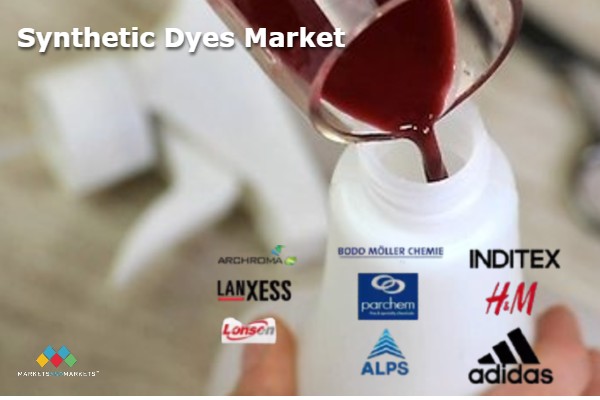
The global synthetic dyes market is undergoing a transformative shift. As the demand for sustainable, high-performance dyes surges across textiles, coatings, packaging, and plastics, industry leaders are stepping up with advanced technologies, eco-innovations, and bold strategic investments.
The synthetic dyes market is expected to grow at a CAGR of 5.0% to reach USD 9.05 billion by 2029.Here’s a deep dive into the top synthetic dye companies and how they’re shaping the future of colorants worldwide.
Top Synthetic Dyes Manufacturers
The synthetic dyes market is dominated by several major players—known for their innovation, sustainability, and expansive portfolios. Here are the standout companies shaping the industry:
1. BASF SE
Germany-based BASF leads the field with high-performance and eco-friendly synthetic dyes. With a strategic €70 million investment in bio-based Natupal® TS colorants, they’re committed to renewable feedstocks and strong collaborations—like with Nestlé for plant-based meat color solutions
2. Huntsman Corporation
A major US player offering a wide range of dyes for textiles, plastics, coatings, and cosmetics. Huntsman champions sustainability, with innovations like Eriopon® E3-Save reducing water and energy use during application
3. Clariant AG
Swiss-based Clariant integrates circular economy principles with technologies like Reaxol®, which recycles textile dye wastewater and cuts effluent by 90%. Their global partnerships, such as with ITC in India, showcase their capability
4. Archroma
Known for sustainable and high-performance dyes, Archroma offers eco-conscious ranges like EarthColors and innovations like metal-free acid dyes. Their comprehensive portfolio includes AVITERA SE, Diresul, and LUMAPLAST
5. DyStar Group
A global leader in textile dyes and chemicals, DyStar focuses on vertical integration and cost-effective production. Their Eco-Advanced Black and EcoFast Pure technologies improve dyeing efficiency and sustainability
6. DIC Corporation / Sun Chemical
Japan’s DIC—with its Sun Chemical subsidiary—leads in industrial and packaging dyes, offering UV- and heat-resistant pigments for coatings and printing
7. Kiri Industries Ltd.
An Indian powerhouse, Kiri focuses on cost-effective reactive dyes and is expanding capacity with a new Gujarat plant. Their Axill Series targets international markets with price-competitive solutions
8. Atul Ltd.
Another Indian leader with a broad product portfolio, Atul serves over 4,000 customers globally with specialty dyes and chemicals, emphasizing both diversity and customization
9. Zhejiang Longsheng (DyStar), Sumitomo Chemical, Lanxess AG, Heubach Colorants & Aarti Industries
These firms are essential players with offerings across textiles, coatings, plastics, and food; many are scaling up with eco-innovations and regulatory compliance in mind
Industry Trends & Competitive Strategies
- Sustainable Chemistry: Emphasis on low-VOC, bio-based dye systems like BASF’s Natupal® and Archroma’s EarthColors.
- Circular Solutions: Clariant and DyStar focus on wastewater recycling and resource-efficiency technologies.
- M&A & Partnerships: Huntsman’s acquisition of Gabriel Performance and Archroma’s alliances bolster portfolios and technology reach.
- Digital & High-Performance Dyes: Oil- and UV-resistant pigments for industrial coatings and automotive OEMs are gaining traction.
Regional Market Insights
- Asia-Pacific dominates with >70% market share, driven by China, India, Bangladesh, and Vietnam’s textile sectors
- North America focuses on high-performance, specialty dyes in automotive, packaging, and construction.
- Europe demands advanced technical and eco-friendly dyes in automotive, coatings, and packaging industries.
Why These Companies Lead
- Robust R&D: Leaders like BASF, Huntsman, and Clariant invest heavily in sustainable, high-performance innovations.
- Global Reach: Strong manufacturing and distribution networks across Asia, Europe, and North America.
- Regulatory Agility: Strength in global compliance—from REACH to OEKO-TEX and ZDHC.
- Diversified Portfolios: Serving multiple sectors—textiles, plastics, coatings, packaging, and specialty industries.
To maintain a competitive edge, companies must continue:
- Pushing green chemistry and sustainability-focused product lines.
- Scaling production of low-environmental-impact dyes.
- Digitalizing operations for custom, high-performance dye formulation.
- Partnering strategically to enter new verticals and regions.
The global synthetic dyes industry is no longer just about color—it’s about sustainability, innovation, and resilience. As top players invest in cleaner technologies and smarter strategies, the future of synthetic dyes is vibrant in more ways than one.